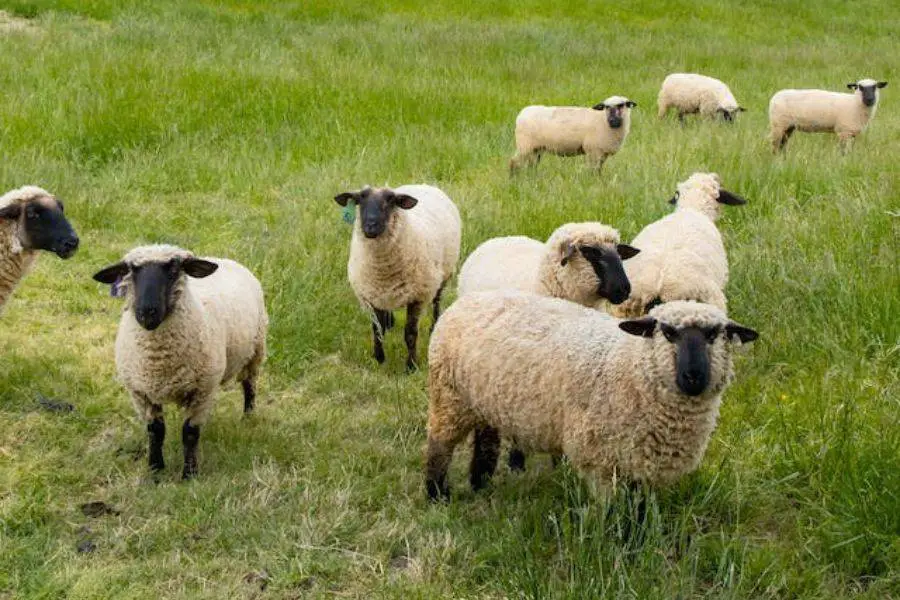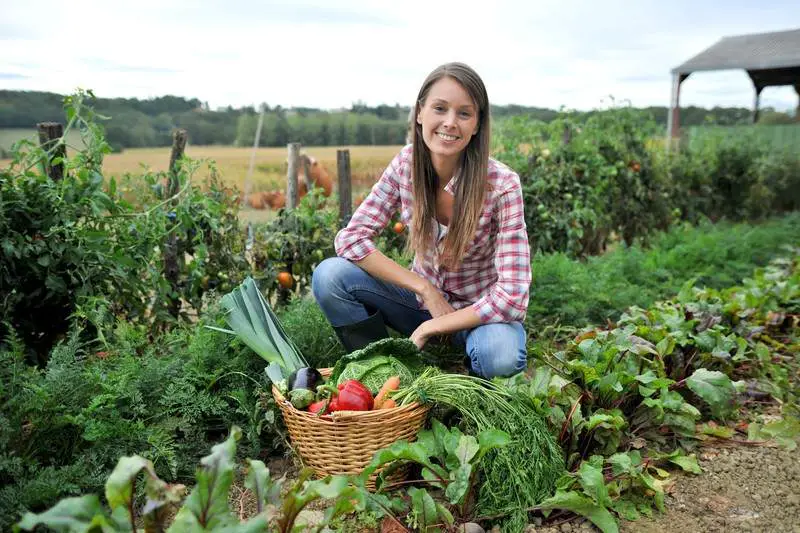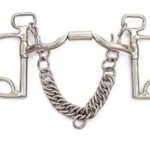Table of Contents
Dorper and Katahdin sheep are two popular breeds among farmers and homesteaders, each with their unique characteristics and advantages.

This article will delve into a thorough comparison of these two breeds to provide valuable insights for anyone considering raising sheep on their homestead.
Breed History and Origin
Dorper Sheep: A Brief History
The Dorper sheep is a South African breed developed in the 1930s by crossing Blackhead Persian ewes with a Dorset Horn ram.
The breed was created to produce a meat sheep that could thrive in the arid regions of South Africa. They’re known for their adaptability, high fertility, and quality meat production.
Katahdin Sheep: A Brief History
The Katahdin breed, named after Mount Katahdin in Maine, USA, was developed in the mid-20th century by Michael Piel.
He aimed to create a breed that could shed its winter coat, reducing the need for shearing.
The Katahdin is a hardy breed, well-suited to various climates, and known for its excellent mothering abilities and lean meat.
Physical Characteristics
Appearance and Size of Dorper Sheep
Dorpers are medium to large-sized sheep, with mature rams weighing between 225-275 pounds and ewes around 150-200 pounds.
They have a distinct black head (in the case of Blackhead Dorpers) or can be entirely white. Dorpers have a thick skin, which contributes to their adaptability to different climates.
Appearance and Size of Katahdin Sheep
Katahdins are medium-sized sheep, with rams typically weighing 180-250 pounds and ewes 120-160 pounds.
They come in various colors and patterns and are known for their hair coat that sheds annually, eliminating the need for shearing.
Climate Adaptability
How Dorper Sheep Handle Different Climates
Dorper sheep are incredibly adaptable and can thrive in a wide range of climates, from arid regions to colder areas. Their thick skin and dense coat offer protection against harsh weather conditions.
How Katahdin Sheep Handle Different Climates
Katahdins are also very adaptable. They handle cold winters well, thanks to their double-coated fleece, and their ability to shed helps them stay cool in warmer months.
Reproduction and Lambing
Reproductive Traits of Dorper Sheep
Dorpers have excellent reproductive capabilities, often producing twins. They can breed year-round, which allows for flexibility in managing the lamb production schedule.
Reproductive Traits of Katahdin Sheep
Katahdins are prolific breeders and good mothers. They typically have a high twinning rate and can also breed out of season.
Health and Lifespan
Health Issues and Lifespan of Dorper Sheep
Dorpers are generally healthy, with a lifespan of 10-12 years. They’re resistant to many diseases and parasites that affect other sheep breeds but should still be monitored for common sheep health issues.
Health Issues and Lifespan of Katahdin Sheep
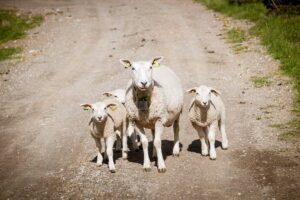
Katahdins are known for their robust health and natural resistance to many parasites. They typically live 8-12 years. However, like all livestock, they require regular health checks and vaccinations.
Maintenance and Care
Maintenance Needs of Dorper Sheep
Dorpers are low-maintenance animals. They don’t require shearing due to their hair shedding ability, and their hardiness means they often need less veterinary care than other breeds.
Maintenance Needs of Katahdin Sheep
Katahdins are also low-maintenance due to their ability to shed their coats. They are well-suited to pasture-based systems, making them a good choice for homesteaders interested in sustainable farming practices.
Meat and Wool Production
Meat and Wool Yield of Dorper Sheep
Dorpers are primarily meat sheep, known for their lean, high-quality meat. They grow quickly and have a high dressing percentage. As they are hair sheep, they do not produce wool.
Meat and Wool Yield of Katahdin Sheep
Katahdins are also raised primarily for meat. Their meat is mild-flavored and lean. They do not produce wool but shed their hair coat annually.
Personality and Temperament
Temperament of Dorper Sheep
Dorpers are known to be docile and calm, making them easy to handle, even for novice farmers.
Temperament of Katahdin Sheep
Katahdins are typically gentle and easy to manage. They are known for their strong flocking instinct, which can make them easier to manage in pasture-based systems.
Grazing Habits
Grazing Preferences of Dorper Sheep
Dorpers are excellent foragers and can thrive on poor quality grazing. This makes them suitable for areas with less lush pastures.
Grazing Preferences of Katahdin Sheep
Katahdins are also efficient grazers. They are adaptable to various forage conditions and can do well on pasture without the need for extensive supplemental feeding.
Suitability for Homesteading
Why Dorper Sheep are Suitable for Homesteading
Dorper sheep’s low maintenance, adaptability, and excellent meat quality make them a popular choice for homesteads. They can provide a regular supply of meat with relatively little input.
Why Katahdin Sheep are Suitable for Homesteading
Katahdin sheep are ideal for homesteading due to their hardiness, low maintenance, and good meat qualities. Their ability to thrive on pasture makes them a sustainable choice for small-scale farming.
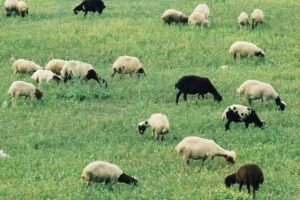
Resistance to Diseases
Disease Resistance in Dorper Sheep
Dorper sheep have a reputation for being robust and resistant to many common sheep diseases. They are known for their resilience against parasites that often plague other sheep breeds.
However, it’s essential to maintain regular health checks, deworming, and vaccinations to ensure their optimal health.
Disease Resistance in Katahdin Sheep
Katahdin sheep exhibit strong resistance to internal parasites, especially gastrointestinal nematodes, making them a healthier choice for areas where these parasites are prevalent.
Their natural disease resistance contributes significantly to their low-maintenance appeal. Still, like the Dorper, regular health checks and preventative care are crucial.
Economic Considerations
Cost-effectiveness of Raising Dorper Sheep
Dorpers are an economically viable breed for several reasons. Their fast growth rate and high-quality meat yield mean they can provide a quick return on investment.
Their hardiness and disease resistance can lead to lower veterinary costs. Furthermore, their adaptability to various grazing conditions can reduce feed costs.
Cost-effectiveness of Raising Katahdin Sheep
Katahdins also present an economically sound choice. Their ability to thrive on pasture reduces the need for supplemental feeding, translating to lower feed costs.
The breed’s resistance to disease can mean fewer veterinary expenses.
Additionally, their prolific breeding capabilities and good mothering traits can result in higher lamb survival rates, increasing the profitability.
Management and Handling
Ease of Handling Dorper Sheep
Dorpers are typically easy to handle due to their docile nature. They respond well to routine handling and management practices, making them suitable for both experienced farmers and beginners.
However, like all livestock, they require consistent and gentle handling to maintain their calm disposition.
Ease of Handling Katahdin Sheep
Katahdin sheep are generally known for their calm and friendly temperament, making them easy to handle even for novice shepherds.
Their strong flocking instinct can make tasks like moving the herd or rotational grazing easier. Regular, gentle handling from a young age can further enhance their manageability.
Conclusion
Both Dorper and Katahdin sheep have their strengths, making the decision largely dependent on individual needs and circumstances.
Factors such as climate, available grazing, and personal preference will play a significant role in this choice.
Choosing the right breed for your homestead is a critical decision that can impact the success of your venture.
Both Dorper and Katahdin sheep are excellent choices, each offering unique advantages. By considering the factors discussed in this article, you’ll be well-equipped to make an informed decision.

